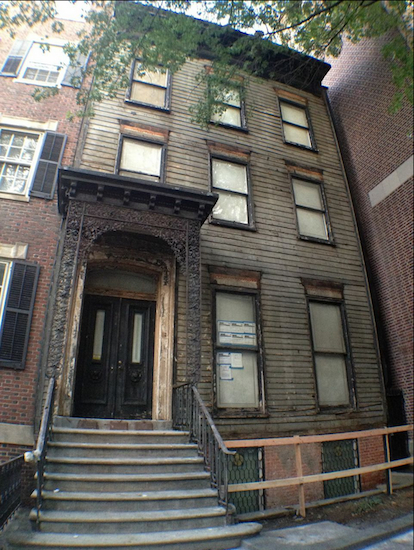‘Asphalt Jungle’ no more: Historic Brooklyn Heights house sheds shingles in renovation

Finally! Asphalt shingles have been stripped from the front of 113 Willow St. in Brooklyn Heights. Brooklyn Eagle photos by Lore Croghan
Clapboard is making a comeback — on Willow Street.
An 1820s-vintage row house on the landmarked Brooklyn Heights street has been liberated from unsightly asphalt shingles that covered it for decades.
Now that workers have removed faded ghostly-looking shingles from the front of 113 Willow St., wood planks from a bygone era are there for all the world to see, above a basement floor covered with rosy brick.

Brooklyn Heights
View MoreRead the Brooklyn Height's Press and Cobble Hill News. Find out more about Brooklyn Height's History here.